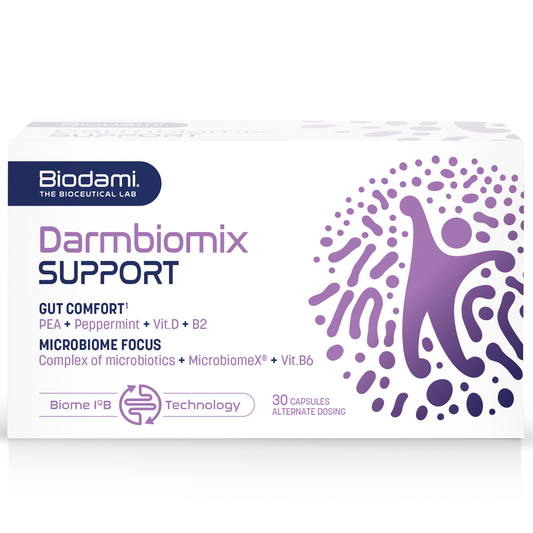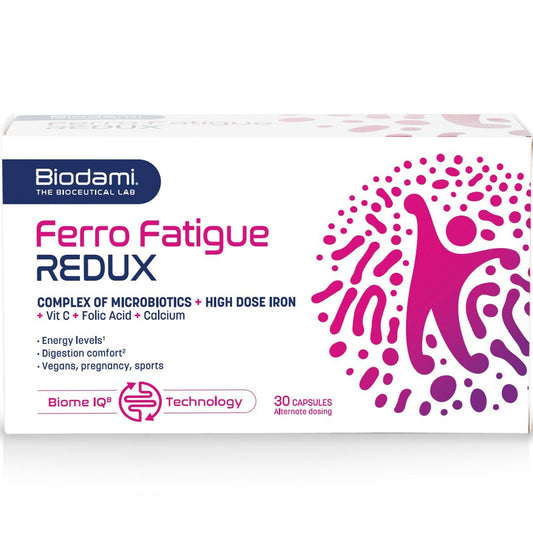Probiotics have gained a lot of attention in recent years due to their potential health benefits, particularly in improving gut health. But what exactly are probiotics, how do they work, and why are they beneficial for the human body?
What are probiotics, and what are the different types?
Starting with a simple definition, probiotics are live microorganisms that are believed to provide different health benefits when consumed in sufficient amounts. Their positive way of working is explained through improving the balance of the beneficial microorganisms (bacteria) in the gut, also called gut microbiota. A diverse population of bacteria can be especially found in the large intestine, but microbial activity in the small intestine is still high (with more diverse microbiota in the ileum as opposed to the duodenum). Probiotic microorganisms you can find in the small intestine for example include the following:
- Lactobacillus that produces lactic acid and can also be found in fermented foods like yogurt and kefir.
- Bifidobacterium that supports the breakdown of complex carbohydrates and the production of short-chain fatty acids.
- Clostridium that produces spores, and depending on the species can be either beneficial or harmful to the human body.
- Escheria coli (E. coli) of which the majority of strains are harmless.
There is no one type of probiotic; there are different strains of probiotics, each with their own different health benefits. Therefore, it is important that you always match the probiotic to your personal health needs and desired benefits. While some probiotic strains benefit overall gut health, other strains have been shown to effectively treat very specific health conditions. Lactobacillus rhamnosus GC, for example, has been effectively used to reduce the severity and duration of diarrhea in children, while Bifidobacterium lactis is known to improve constipation symptoms in adults.
Probiotic benefits
As mentioned before, different probiotic strains have different health benefits, therefore they need to be matched to your own health needs and requirements. In the small intestine, probiotics have the ability to improve the balance of your beneficial gut microbiota, while inhibiting the overpopulation of harmful bacteria. This can in turn help with the absorption of nutrients in the gut, as well as reduce inflammation. Especially concerning the latter, probiotics like Lactobacillus and Bifidobacterium can ease the symptoms of certain small intestinal disorders like IBS (irritable bowel syndrome) or SIBO (small intestinal bacterial overgrowth).
There is a similar effect for probiotics in the large intestine. They can improve the balance of beneficial bacteria, while reducing the number of harmful ones. In the large intestine this may lead to an immune system boost, an improved digestion and reduced inflammation. Here, probiotics like Lactobacillus and Bifidobacterium can ease the symptoms of bloating, constipation, diarrhea and IBD (inflammatory bowel disease). 
Sources of probiotics
So, what are the different sources of probiotics? In consultation with your doctor or a healthcare professional, you may choose to take probiotics in the form of supplements like capsules, powders and tablets with different probiotic strain compositions. However, probiotics can also be naturally found in certain foods, especially fermented ones. The following foods are a good source of probiotics:
- Yogurt: live and active cultures contained in yogurt could be Lactobacillus acidophilus or Bifidobacterium lactis.
- Kefir: similar to yogurt, this fermented milk drink contains probiotics like Lactobacillus and Bifidobacterium.
- Sauerkraut: a fermented cabbage dish with probiotics like Lactobacillus and Leuconostoc.
- Tempeh: in vegetarian and vegan dishes used fermented soybean product with probiotics like Lactobacillus and Bifidobacterium.
- Kimchi: a dish traditional in Korea made from fermented cabbage and radishes containing probiotics like Lactobacillus and Bifidobacterium.
- Miso: a seasoning traditional in Japan made from fermented soybeans containing probiotics like Lactobacillus and Bifidobacterium.
- Kombucha: a symbiotic culture of bacteria and yeast (SCOBY) is used to make this fermented tea drink containing probiotics like Aectobacter and Gluconacetobacter.
- Other fermented foods, but not all fermented foods necessarily need to be probiotic foods. For this criterion to apply, a food needs to contain live and active cultures of beneficial bacteria.

Prebiotics & their relation to probiotics
Now that you know what probiotics are and why they are beneficial for the human body, let’s talk about how to optimise their efficiency. As any live organism, probiotics need food to function. This is where prebiotics come into play. Prebiotics are defined as carbohydrates and non-digestible fibres serving as a source of food for beneficial gut bacteria, which includes probiotics. Examples include the following fibres:
- Inulin: a fibre found in certain plant foods like Jerusalem artichokes, asparagus and chicory root.
- Galactooligosaccharides (GOS): a type of short-chain carbohydrates found in certain plant foods like whole grains and legumes.
- Fructooligosaccharides (FOS): a type of short-chain carbohydrates found in certain fruits and vegetables like onions, garlic and bananas.
The prebiotic way of working lies in facilitating probiotic growth and activity. If you plan on taking probiotic supplements and/or eating more probiotic foods, it may be helpful to incorporate an increased amount of prebiotic foods into your diet as well. Further prebiotic containing foods include leeks, apples, barley and oats.

Recommended For You
Kristina Cueva
Kristina has always had a passion for understanding diseases and their underlying mechanisms. With a Biomedical sciences background as well as Public Health & Economics, Kristina understands the burdens diseases have on society. This helps her understand the necessary innovations to promote good health which ultimately lower burden of disease.
References:
Office of Dietary Supplements - Probiotics. (n.d.). https://ods.od.nih.gov/factsheets/Probiotics-HealthProfessional/
International Scientific Association for Probiotics and Prebiotics - Probiotics. (2019). https://isappscience.org/wp-content/uploads/2019/04/Probiotics_0119.pdf
Probiotics: What You Need To Know. (n.d.). NCCIH. https://www.nccih.nih.gov/health/probiotics-what-you-need-to-know
International Scientific Association for Probiotics and Prebiotics - Prebiotics. (2019). https://isappscience.org/wp-content/uploads/2019/04/Prebiotics_Infographic_rev1029.pdf
DISCOVER OUR PRODUCT FOR GLUTEN SENSITIVITY GUT DISCOMFORT










